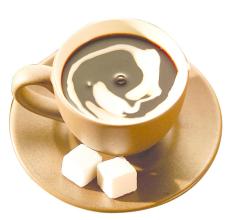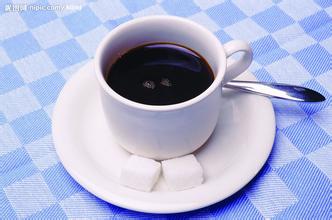Introduction of Peruvian Coffee Manor with strong aroma and smooth taste
After peace negotiations in 1929, Peru recovered Tacna Province. In 1933, a border war with Colombia took place, and Peru was defeated. In October 1948, Audria launched a military coup to power. In June 1963, Belond Terry of the People's Action Party was elected president. On October 3, 1968, Velasco became president after a coup d'état. General Morales took power on August 29, 1975, and declared "return to the people" in 1977. Democratic elections were held in 1980 to restore civilian government. From 1990 to 2000, Fujimori (Japanese), leader of the "Reform 90", served two terms as president, resigning in exile in Japan in November 2000. From 2001 to 2006, Toledo, leader of Peru Viable, was president. From 2006 to 2011, Garcia, leader of the Apura Party, served as president. On July 28, 2011, President Humala of the Nationalist Party took office as President for a five-year term. The Andes run north-south, and the mountains account for 1/3 of the country's area. The whole territory is divided into three regions from west to east: the western coastal area is a narrow arid zone, a tropical desert area with dry and mild climate, intermittent plains, developed irrigation agriculture and concentrated urban population; the central mountainous plateau area is mainly the middle part of the Andes, with an average altitude of about 4300 meters, the birthplace of the Amazon River; The eastern part of the Amazon tropical rain forest area, is the upper reaches of the Amazon River basin, for the foothills and alluvial plains, high temperature and rainy all year round, forest all over, sparsely populated, Peru is the newly developed oil production areas.
Koropna Peak and Sarkan Mountain are above 6000 meters above sea level, and Huascaran Mountain is 6768 meters above sea level, the highest point in Peru. The main rivers are the Ucayali River and Putumayo River. The southern part of the central part is volcanic and earthquakes are frequent. The southeast border with Bolivia has Lake Titicaca, the second largest lake in South America. The northern part of the central coast and offshore oil reserves. Offshore waters are rich in anchovies (Peruvian sardines) and other fishery resources, and coastal islands have a large number of guano layers. Forest covers 51% of the territory
As a rising star in the coffee world, Peruvian coffee is gradually opening up its popularity and entering the international market. Peruvian coffee has always been used as one of the blend beans for comprehensive coffee stability. Peruvian coffee tastes mellow and has the right acidity. This tepid coffee attitude has made more and more people like it.
Peru is located in the west of South America, with a coastline of 2254 kilometers. The Andes runs through the north and south, and the mountains account for 1/3 of the country's area. They belong to the tropical desert area and have a dry and mild climate. Peruvian coffee is mostly grown at the foot of the Andes, where it is rich in quality traditional Central American coffee beans.
Peru is a huge and diverse land area where they can produce a large variety of coffee beans, and Peru produces very good Peruvian coffee. Overall, these beans have a Central American sheen but are packaged with South American flavors. Quality organic grounds do have more of a rustic coffee flavor. As long as the beans keep adding flavor that interests people rather than weakening it. This cup of Peruvian coffee has all the brightness and depth of taste. When a cup of regular Peruvian coffee is in your hand, you don't have to try to taste whether it's good or not.
Peruvian coffee beans are most famous for coffee beans produced in Chancha Mayo in the middle and Cuzco in the south. In addition, there are also some areas in northern Peru that produce organic coffee. Organic coffee is made from beans grown in the shade. Although the method of growing coffee beans under shade makes the yield not high, the quality can reach the level of gourmet coffee. This is because shade under trees slows the ripening of coffee trees, helps coffee to grow fully, makes it contain more natural ingredients, fosters better flavors, and reduces caffeine content.
Peru's coffee cultivation is planned, which greatly increases coffee production. Its rich acidity and mellow smoothness are its most striking features. Peruvian coffee has a mild acidity, medium texture, good taste and aroma, and is an indispensable ingredient in making mixed coffee. Excellent Peruvian coffee, rich aroma, smooth taste, structured, rich sweet, and contains elegant mild acidity, will quietly wake up your taste buds.
The difference between regular organic Peruvian coffee and high-quality organic Peruvian coffee is enormous: the cheaper beans are not only inferior in quality, but often have significant defects in the cup. Especially grassy, overfermented. Finding good Peruvian coffee beans takes a lot of effort to find among a large number of middlemen and other people who can buy them. But it also takes some hard work to pick out the sample beans. But that's better than slogging through piles of paperwork.

Important Notice :
前街咖啡 FrontStreet Coffee has moved to new addredd:
FrontStreet Coffee Address: 315,Donghua East Road,GuangZhou
Tel:020 38364473
- Prev

Introduction to the extra thick and mellow Indonesian civet coffee manor with special flavor and taste
Kopi Luwak is produced by the feces of Indonesian coconut cats (a kind of civet) as raw materials, so it is called Kopi Luwak. This kind of animal mainly feeds on coffee beans. After completing fermentation in the coconut cat's stomach, it destroys proteins, produces short peptides and more free amino acids, reduces the bitterness of coffee, and then excretes feces as the main raw material. Because coffee beans cannot be digested, they will be
- Next

Rough, fruity, Cuban Crystal Mountain Coffee Flavor, Manor characteristics, Fine Coffee introduction
The Cuban flag is horizontally rectangular with a ratio of length to width of 2 ∶ 1. On one side of the flagpole is a red equilateral triangle with a white five-pointed star; the right side of the flag is composed of three blue wide stripes and two white wide stripes parallel and connected. Triangles and stars were originally symbols of Cuba's secret revolutionary organizations, symbolizing freedom, equality, fraternity and the blood of patriots. The pentagram also represents that Cuba is a
Related
- Detailed explanation of Jadeite planting Land in Panamanian Jadeite Manor introduction to the grading system of Jadeite competitive bidding, Red bid, Green bid and Rose Summer
- Story of Coffee planting in Brenka region of Costa Rica Stonehenge Manor anaerobic heavy honey treatment of flavor mouth
- What's on the barrel of Blue Mountain Coffee beans?
- Can American coffee also pull flowers? How to use hot American style to pull out a good-looking pattern?
- Can you make a cold extract with coffee beans? What is the right proportion for cold-extracted coffee formula?
- Indonesian PWN Gold Mandrine Coffee Origin Features Flavor How to Chong? Mandolin coffee is American.
- A brief introduction to the flavor characteristics of Brazilian yellow bourbon coffee beans
- What is the effect of different water quality on the flavor of cold-extracted coffee? What kind of water is best for brewing coffee?
- Why do you think of Rose Summer whenever you mention Panamanian coffee?
- Introduction to the characteristics of authentic blue mountain coffee bean producing areas? What is the CIB Coffee Authority in Jamaica?

